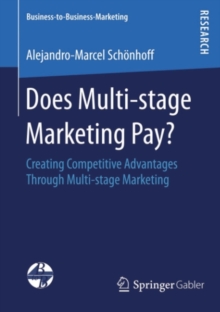
Strategic Shifts between Business Types : A transaction cost theory-based approach supported by dyad simulation PDF
by Katrin Susanne Muhlfeld
Part of the Business-to-Business-Marketing series
Description
The range of products and services that are traded on business-to~business markets is very broad.
It encompasses such heterogeneous goods as standardized software, machine tools, and power stations.
Against this background of heterogeneity, the development of undifferentiated "one-for-all" marketing programmes is neither promising from the practitioner's perspective, nor consistent with an application-oriented approach in marketing science.
Yet, at the same time, the pitfalls of overemphasizing the particularities of individual transactions, which lead to a lack of generalizability, are to be avoided.
As a response to this dile=a, various conceptions for systematizing transactions on business-to-business markets have been developed in the past years.
Co=on to all of these concepts, which are rather varied in terms of their methodology, are the objectives of identifying meaningful types of transaction processes (usually referred to as transaction or business types) and of deriving corresponding reco=endations to guide marketing practice.
Co=on to all of them is, however, also a deficit: The approaches presented to date take into account only the heterogeneity that prevails at a certain point in time.
They do not capture the potential change of market offerings over time, that is, the heterogeneity that arises from shifts between the different types in the course of time.
The existent approaches are, hence, static in the sense that they treat the criteria that are used for categorization as given.
They do not interpret them as variables that are susceptible to the transaction parties' design.
Information
-
Download - Immediately Available
- Format:PDF
- Publisher:Deutscher Universitatsverlag
- Publication Date:06/12/2012
- Category:
- ISBN:9783322816573
Other Formats
- Paperback / softback from £75.39
Information
-
Download - Immediately Available
- Format:PDF
- Publisher:Deutscher Universitatsverlag
- Publication Date:06/12/2012
- Category:
- ISBN:9783322816573










